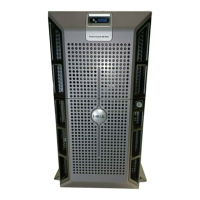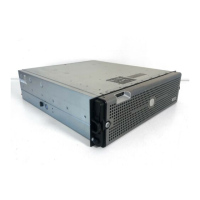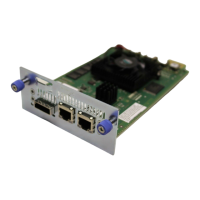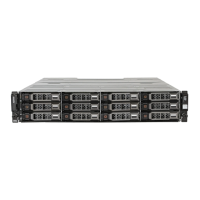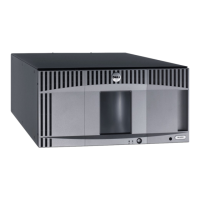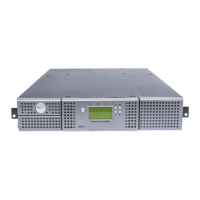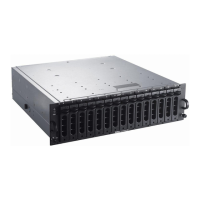blocks on the primary virtual disk are written to the secondary virtual disk. Full synchronization is not
required.
NOTE: If you suspend a remote replication that is set up in the Write consistency mode, you
suspend all remote replicated pairs within the group. You can then resume replication operations
for any of the individual remote replicated pairs that are in the group.
This example shows the suspend remoteReplication command:
c:\...\smX\client>smcli 123.45.67.88 123.45.67.89
-c “suspend remoteReplication primary Jan_04_Account
writeConsistency=false;”
The writeConsistency parameter defines whether the virtual disks identified in this command are in a
write-consistency group or are separate. For the virtual disks in a write-consistency group, set this
parameter to TRUE. For the virtual disks that are not in a write-consistency group, set this parameter to
FALSE.
This example shows how to use the command in a script file:
suspend remoteReplication virtualDisk Jan_04_Account
writeConsistency=false;
The replication relationship remains suspended until you use the resume remoteReplication
command to restart synchronization activities. This command restarts data transfers between a primary
virtual disk and a secondary virtual disk in a replication relationship after the replication has been
suspended or unsynchronized.
This example shows the resume remoteReplication command:
c:\...\smX\client>smcli 123.45.67.88 123.45.67.89
-c “resume remoteReplication virtualDisk Jan_04_Account
writeConsistency=false;”
The writeConsistency parameter in this command operates the same as in the previous command.
This example shows how to use the command in a script file:
resume remoteReplication virtualDisk Jan_04_Account
writeConsistency=false;
Removing A Replication Relationship
Use the remove remoteReplication command to remove the link between a primary virtual disk and
a secondary virtual disk. (Removing a replication relationship is similar to deleting a replication
relationship.) Removing the link between a primary virtual disk and a secondary virtual disk does not
affect any of the existing data on either virtual disk. The link between the virtual disks is removed, but the
primary virtual disk still continues normal I/O operations. Later, you can establish the replication
relationship between the two virtual disks and resume normal replication operations. You can remove the
replication relationship for one or several remote replicated pairs with this command.
This example shows the remove remoteReplication command:
c:\...\smX\client>smcli 123.45.67.88 123.45.67.89
-c “remove remoteReplication localVirtualDisk [Jan_04_Account];
When you run this command, use the name of the primary virtual disk of the remote replicated pair.
This example shows how to use the command in a script file:
remove remoteReplication localVirtualDisk [Jan_04_Account];
106

